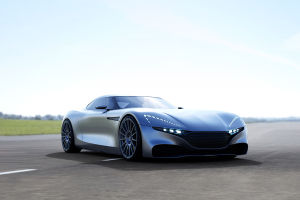When you think of modern transportation, bicycles might not be the first thing that comes to mind.
After all, with cars, trains, and planes dominating our daily commutes, the humble bicycle can seem like a relic of the past.
But bicycles have had a massive impact on shaping transportation as we know it today. From revolutionizing mobility in the late 19th century to becoming a cornerstone of sustainable urban transportation, the bicycle has played a critical role in transforming how we move around—and continues to do so.
The Early Days: A Shift in Mobility
Before the invention of the bicycle, personal transportation was limited and expensive. Horses, carriages, and early forms of steam-powered vehicles were luxuries for the rich, leaving most people reliant on their feet to get around. That all changed in the 19th century when the bicycle came on the scene. The first versions, like the "boneshaker" and the high-wheeled penny-farthing, were a bit awkward, but they offered people an affordable and efficient way to travel.
By the time the modern "safety bicycle" with two equal-sized wheels came along in the 1880s, the bicycle had exploded in popularity, giving people greater freedom and mobility than ever before.
A Brief History of Bicycle Engineering
Video by Beau Janzen
The bicycle became a tool of independence, particularly for women. In fact, in the late 19th century, bicycles were seen as a symbol of women's rights and liberation. With a bicycle, women could travel independently without being reliant on male companions or horse-drawn transport. This newfound freedom helped pave the way for social change, especially in women's fashion and roles in society. It wasn't just a shift in transportation but a shift in culture.
Paving the Way for Cars
While bicycles may not seem directly connected to the rise of the automobile, they played a surprisingly key role. During the late 1800s and early 1900s, as bicycles became more popular, cities began to improve roads to accommodate cyclists. Before this, most roads were unpaved and muddy, making travel difficult for any vehicle. Cyclists' demands for smoother roads led to improved infrastructure, which later benefited cars and other forms of transportation.
In addition, early bicycle manufacturers were the first to experiment with technologies like pneumatic tires, ball bearings, and chain-driven gears, all of which were later adopted by the automotive industry. Many early car manufacturers, including Henry Ford, had backgrounds in bicycle production. Car development might have been slower and less efficient without the bicycle's early advancements.
A Green Solution in Urban Transport
Fast forward to today, and bicycles remain an essential part of modern transportation, especially in urban areas. With growing concerns about climate change, traffic congestion, and air pollution, bicycles offer a sustainable, eco-friendly alternative to cars. Cities like Copenhagen, Amsterdam, and Portland have embraced cycling as a central mode of transport, creating dedicated bike lanes, bike-sharing programs, and cyclist-friendly policies to encourage more people to ditch their cars in favor of two wheels.
In densely populated cities, where traffic can be a nightmare, and parking is limited, bicycles are often the fastest and easiest way to get around. They require no fuel, take up far less space than cars, and have zero emissions, making them an attractive option for both individuals and city planners looking to reduce carbon footprints and improve air quality. Plus, cycling is good for your health, adding an extra benefit for urban commuters.
The Future of Bicycles in Transportation
As we move further into the 21st century, bicycles are evolving along with our transportation needs. Electric bikes (e-bikes) are becoming more popular, offering a convenient solution for longer commutes or hilly areas where traditional cycling might be too challenging. E-bikes offer the same benefits as regular bicycles but with an added boost, making cycling accessible to a wider range of people, including those who might not have considered it before.
Bike-sharing programs are also on the rise, with cities around the world implementing systems that allow people to rent bikes for short periods. These programs make it easier for people to incorporate cycling into their daily commutes without the need to own a bike. It's a simple but effective solution that encourages more sustainable, flexible transportation options.
From its early days as a symbol of freedom to its modern role in sustainable transport, the bicycle has undeniably shaped the way we move through the world. Its influence on road infrastructure, automotive innovation, and eco-friendly urban planning proves that the bicycle is more than just a mode of transport — it's a catalyst for change. As cities continue to grow and evolve, bicycles will undoubtedly remain a key player in the future of transportation.


